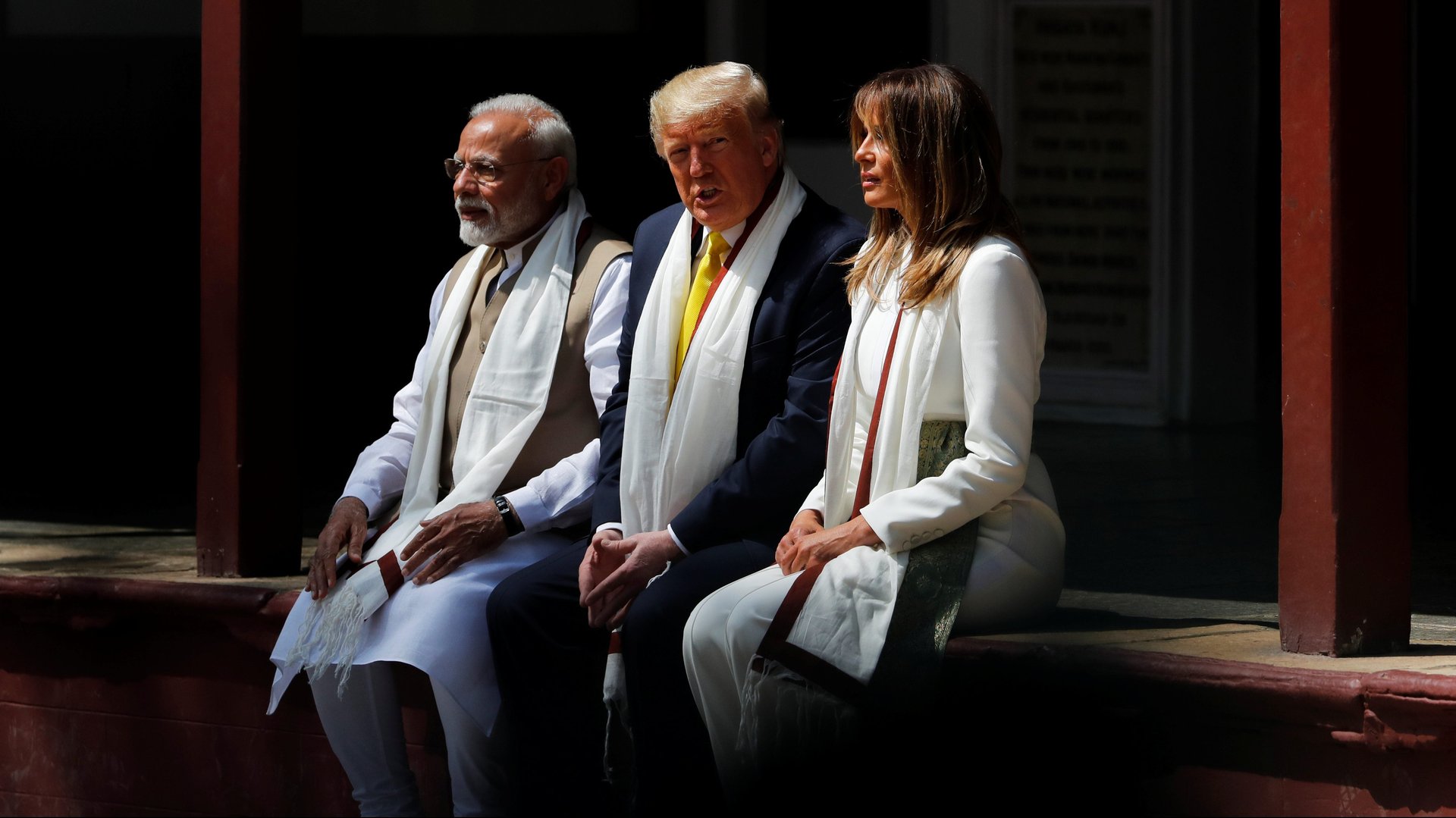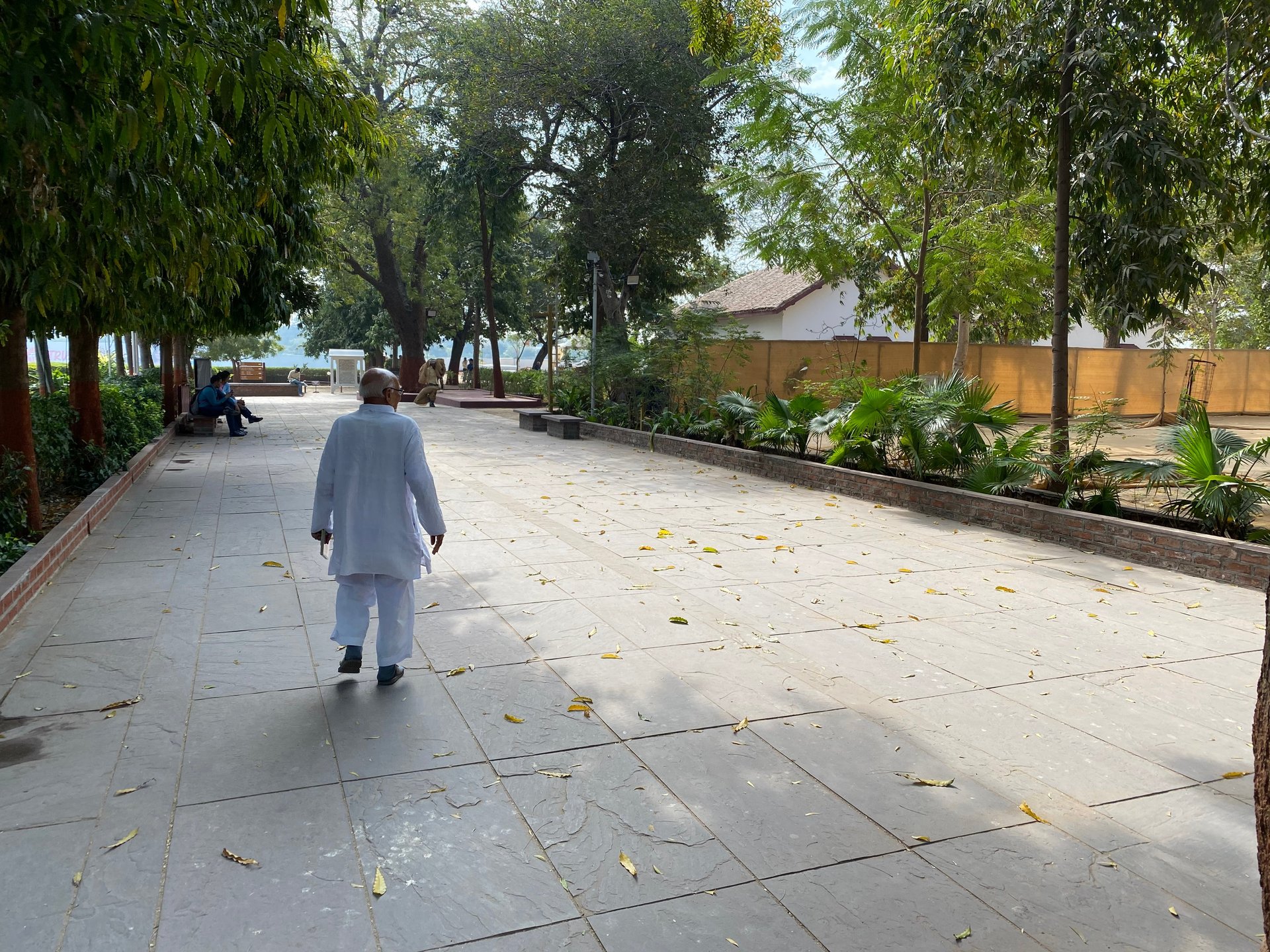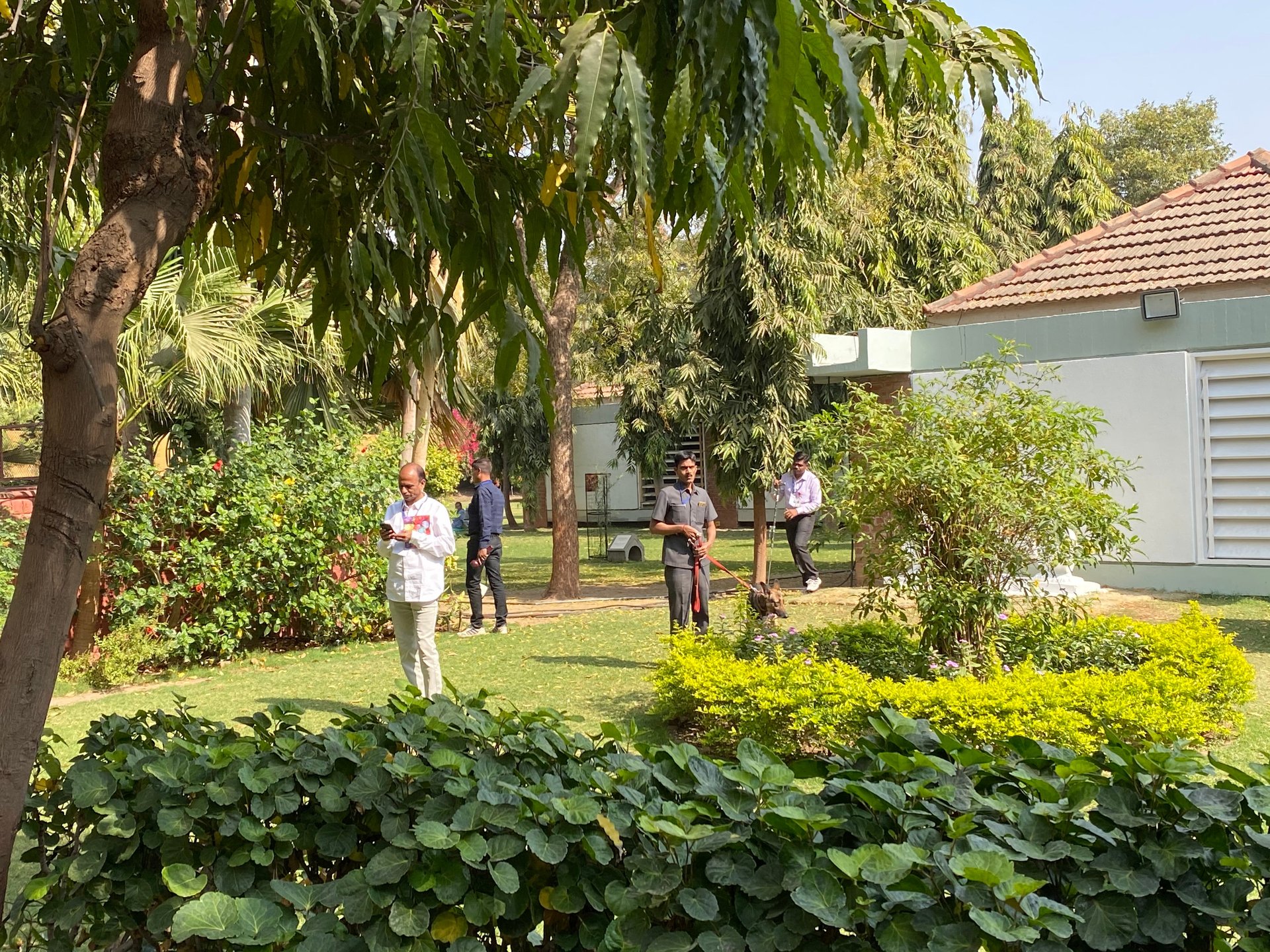Gandhi’s former Sabarmati home remained a sanctuary of calm amid Trump’s visit
This post has been updated.


This post has been updated.
The irony of Donald Trump visiting Mahatma Gandhi’s sacred space could not have been more starkly depicted than in the US president’s remarks in the guest book at Ahmedabad’s Sabarmati Ashram.
In his comment yesterday (Feb. 24), Trump merely thanked Modi for his friendship while entirely forgetting Gandhi himself.
The gaffe, if one may call it so, hits home harder in comparison to what former US president Barack Obama wrote at the Raj Ghat, Gandhi’s memorial in Delhi, in January 2015.
Trump seemed to have made up for this at the Raj Ghat today.
However, Gandhi’s Sabarmati Ashram itself didn’t seem to care much.
Amid all the hullabaloo in Ahmedabad over the high-profile visit, the sprawling riverside venue remained an oasis of peace. While regular visitors were greeted with large cutouts of Modi and Trump at the entrance, Gandhi’s minimalism and swadeshi principles remained untouched within, notwithstanding the spruced-up city streets and the cultural extravaganza outside.
Gandhian Amrut Modi, an administrator of the ashram, was at best dismissive of the whole affair. “Whether he comes or not, it’s up to him and the prime minister,” said the Gandhi Smarak Sangrahalaya director.

In any case, nobody outside the inner security circle, if at all, was sure if Trump would indeed visit the ashram, until he did. The venue, however, was cleaned up and sanitised for security a day before the visit.

But even this imminence brought displeasure for some.
In the compound outside Gandhi’s living quarters, a group of international architects was unhappy that “a man like Trump” would visit the ashram. “Is there anything more ironic in men like Trump, who are nowhere close to Gandhi’s ideals (of non-violence and simplicity) to be visiting a place like this,” asked Julian Cook, an architect and retired educationist from South Africa. Travelling in a group of about 10 men and women, Cook was at the ashram for a tour of the architectural legacy of Charles Correa.
While most agreed with Cook, an Indian-origin man in the group offered a different perspective. “I am a practising Gandhian and even Gandhi’s philosophies had problems. One hears so many things about his questionable practices. But I choose to take what I can from it,” he said. “So if Ahmedabad’s infrastructure gets accessories out of the Trump visit, then let’s focus on the positives,” he added.
At this point, a polite, soft-spoken yet firm debate broke out in the group. “My point is, they are all fallible human beings. But there should be no adoration. Yes, there’s respect, but why can’t one ask questions of one’s leaders?” a woman from the UK said. Cook, bemused at the fire he had inadvertently lit, said this is exactly what the world is seeing because of the rise of cult personalities like Modi, British premier Boris Johnson, and Trump.
Jeff, an American, agreed. “We should be asking why this event has become about Modi and Trump and not US-India,” he said.
As they made their way out of the ashram, a contingent of American security personnel made their way into the compound. And despite the flurry, the gentle breeze from the Sabarmati river brought with it a sense of Wordsworthian sublimity.